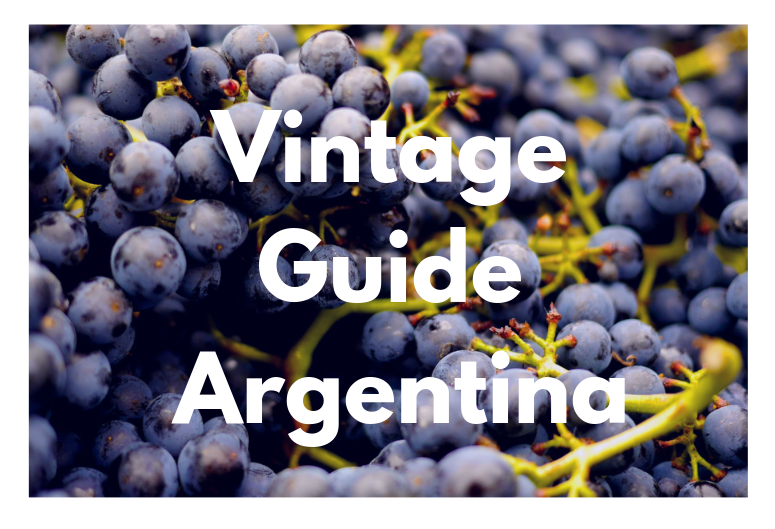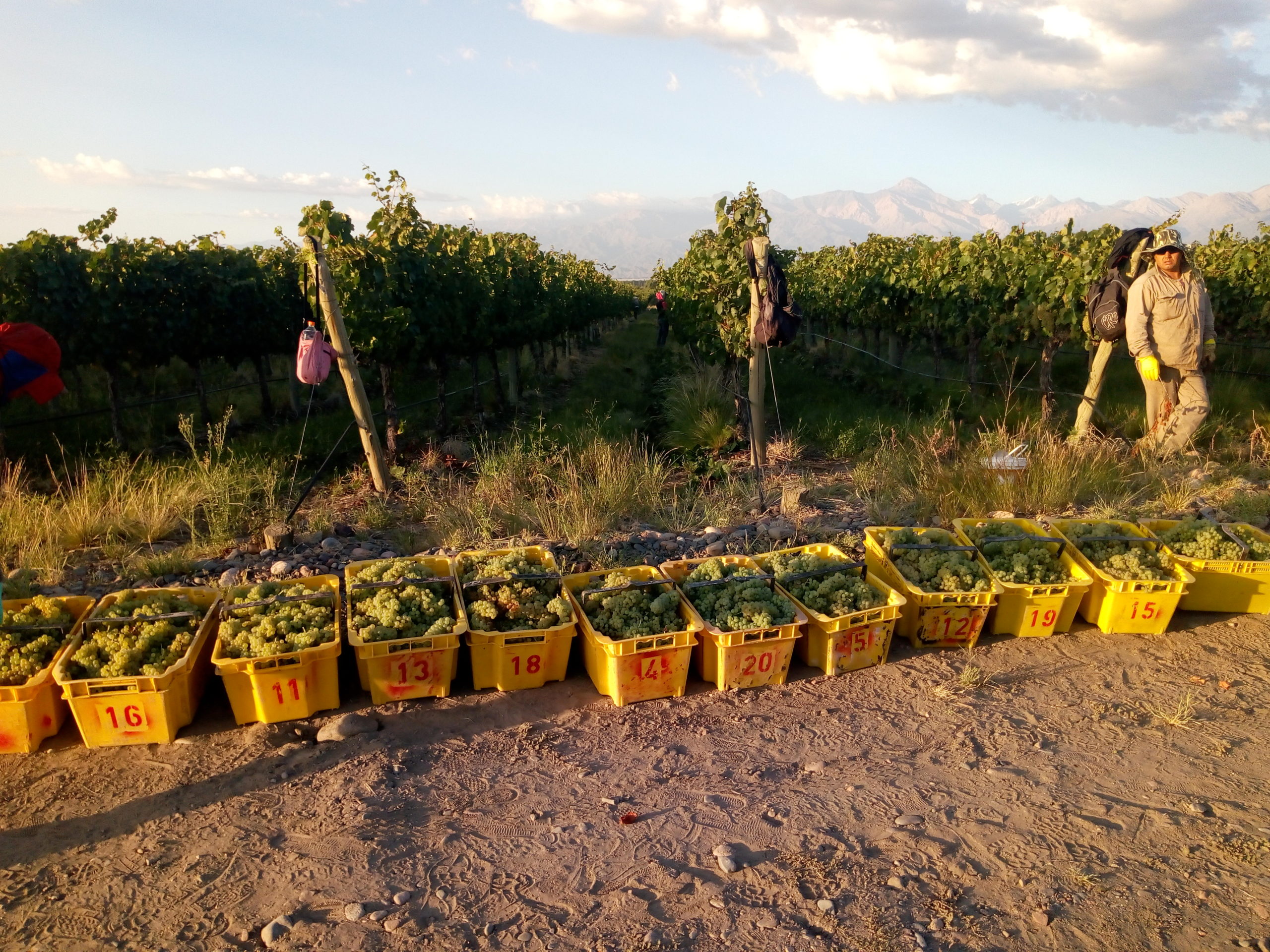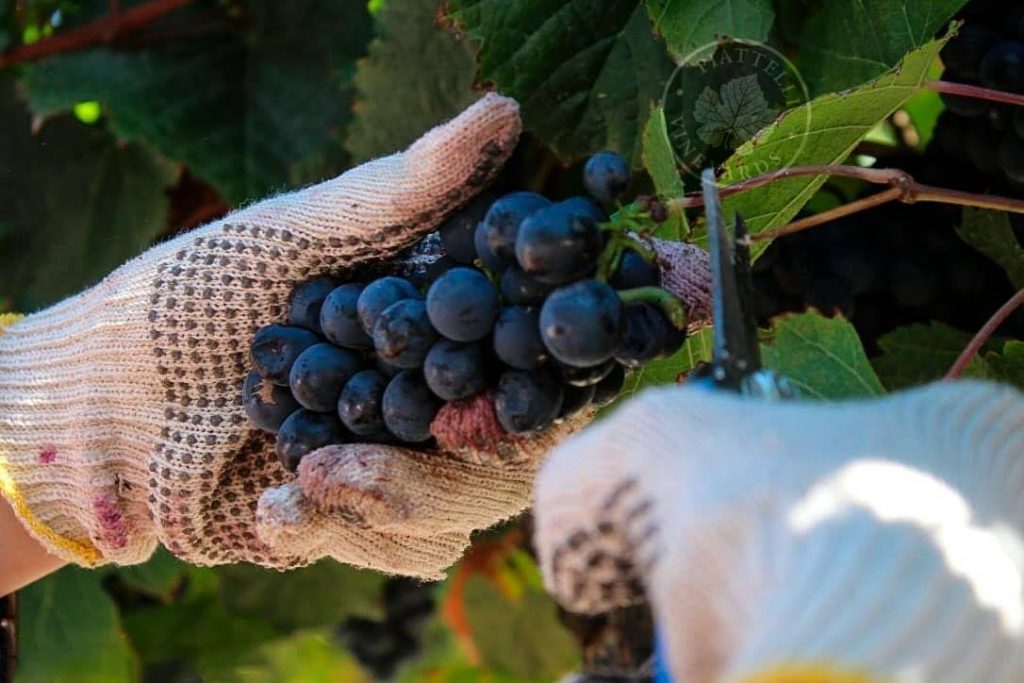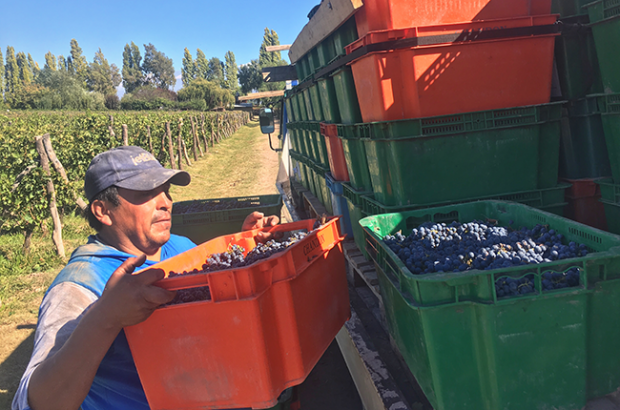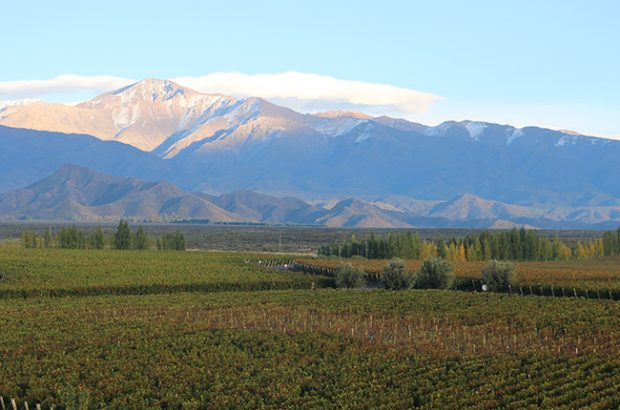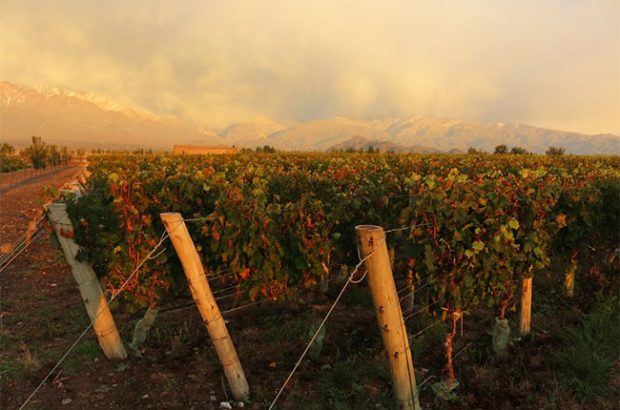The ultimate vintage guide for Argentina: Argentina harvest reports from 2000 to 2022
Although the mainly desertic wine regions of Argentina have a relatively stable weather cycle compared to some Old World wine regions, there are vintage variations in Argentina. The vintage and harvest in Argentina can also vary dramatically across its different regions, meaning one vintage card or vintage score for the year cannot apply for all of Argentina’s wine regions. Here’s the ultimate Argentina vintage guide with in-depth analysis of the latest vintages and harvests and what you can expect in the bottle today.
The South America Wine Guide’s vintage chart for Argentina is based on interviews with winemakers and agronomists across the different wine regions of Argentina, and also vertical tastings of library vintages.
Argentina vintage guide
Argentina’s wine regions span over 2,300km and can be found on the Andean corridor in the west, as well as inland regions in the east and some new vineyards on the coast. The vintage varies depending on the region, so we have tried to separate vintage commentaries depending on the zone.
There are, however, some climatic factors that majorly impact Argentina’s wine regions in general. These influences are described for the regions of Jujuy, Salta, Catamarca, La Rioja, Mendoza, Neuquén and Río Negro (unless otherwise stated):
Factors affecting vintage in Argentina
Rainfall
Most of Argentina’s wine regions are in desert climates protected by the rain shadow created by the Andes mountains. From Salta down to Neuquén, the wine regions have very limited rainfall (as low as 100mm per year in certain regions). There are occasionally large summer downpours that can affect the harvest, although simple treatments in the vineyard can usually remedy this. There is still little risk of peronospora and botrytis (although powdery mildew can be an issue). In a particularly rainy year, it may be the case that the treatments required in the vineyard become greater than the value of the grapes in the bulk wine regions. The biggest challenge with rainfall is too little, and drought can have a significant influence on vintage variation.
Temperatures
The semi-desert climate also creates a great diurnal range with peak day-time temperatures often being 15°C higher than those at night. The higher altitude regions might have an even greater diurnal range. It is not uncommon to have weeks of intense heat, followed by much cooler weeks during the growing season, and this can impact vintage character.
Frost
Events of frost can have a significant impact in higher altitude regions (Uco Valley, Cafayate) and also those in the south (Chubut, Río Negro). These frost attacks affect yield and quality in different vintages.
Zonda
The hot zonda wind (a foehn wind) can burn and dehydrate the grapes, impacting the vintage character. Zonda winds are particularly common in San Juan and Mendoza.
Economy
In Argentina, one of the major influences on vintage variation is the economy. The financial wellbeing of the country changes year-on-year, which impacts consumption, production and quality focus.
Our Argentina vintage guide below is designed to give you an insight into Argentina’s different vintages and what you can expect in general from the wines of that vintage. There are, of course, exceptions to the rule.
Quick reference guide to wine harvests in Argentina
2022: Lower yields but a cooler vintage resulted in some excellent, balanced reds
2021: A cooler and challenging vintage but rewarding for the brave
2020: A small, warm but promising vintage
2019: Excellent harvest across the country, although challenging economic climate
2018: An excellent, normal vintage with a bumper yield
2017: Smaller quantities but good quality
2016: Wet, wet, wet, and cool
2015: A challenging year with varied quality
2014: Cool and wet means fresh wines
2013: Good yields and high quality
2012: Reduced yields of aromatic wines
2011: Fresh and aromatic
2010: Good volumes of fresh wines
2009: Long, fruity wines despite hail and frost
2008: An unusual year producing wines of cooler character
2007: A bumper harvest
2006: Great quality and high yields
2005: Great vintage despite challenging weather
2004: A good year with late rain
2003: Dry and warm
2002: Hotter weather and riper wines
2001: Wet and dilute in parts
2000: Cool, fresh and concentrated
Argentina Harvest Report 2022
Although there were some climate challenges and frosts lowered yields, the overall quality in 2022 is very good with some winemakers claiming it is their vintage of the decade. White wines were affected by a rainy February leading to wines with good natural acidity and lower alcohols. Red wines show the best quality though, and many are claiming it to be an exceptional year, with wines of concentration but also freshness and balance.
EXPECT: Fresh but concentrated reds; lighter whites
BEST FOR: Premium reds, especially Malbec and Cabernet Franc
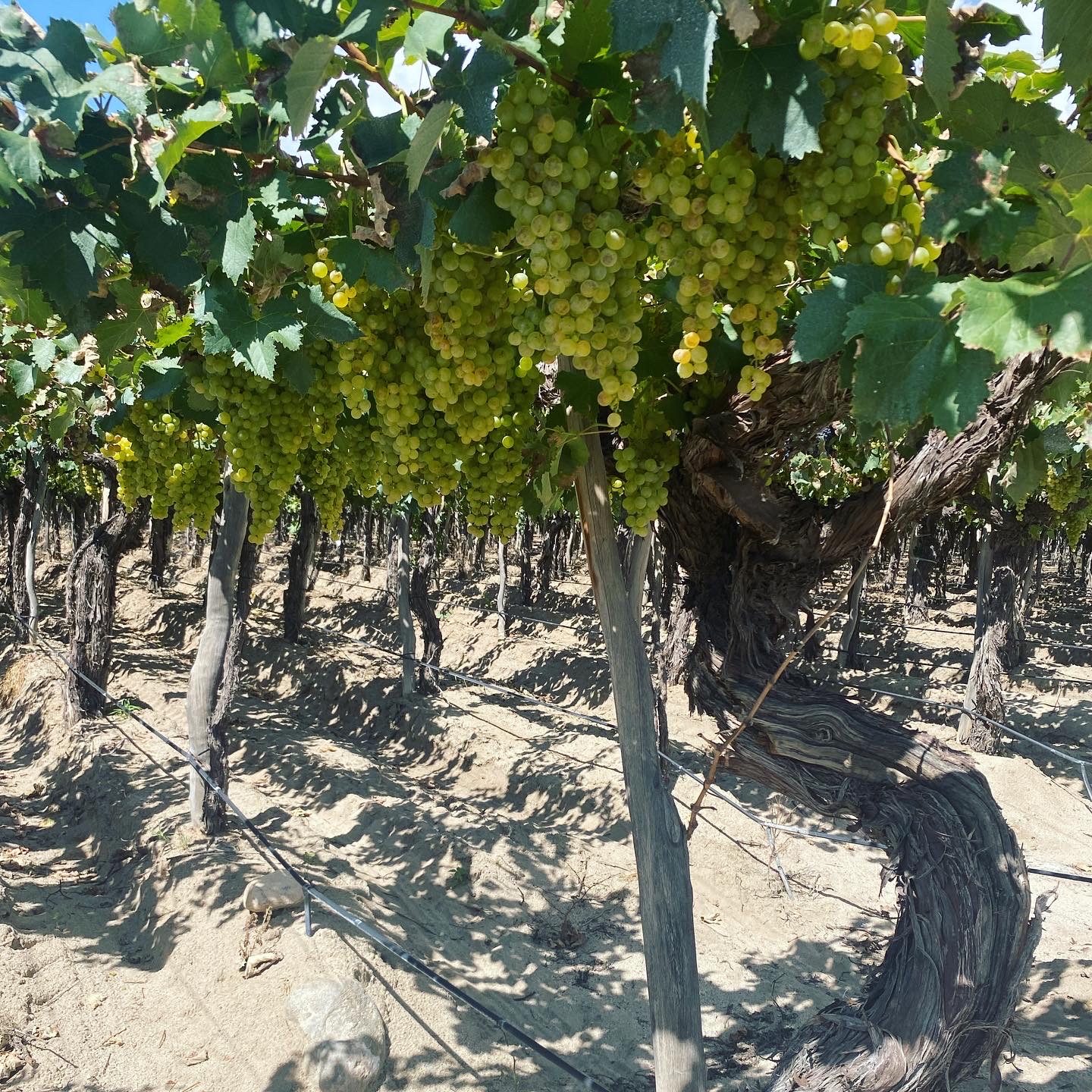
Cuyo & Mendoza
Two big frosts in Mendoza lowered yields from the get go, and there were some unusual weather patterns which meant that each sub-region experienced quite different situations this vintage. In the Uco Valley, there was less rain than usual, whereas in Eastern Mendoza, there was a higher rainfall than usual.
Across the board, however, the quality was high. A warm and dry December and January sped up vine development and brought many of the varieties into the same, earlier maturation period. A rainy February meant that the white varieties needed extra attention in the vineyard to avoid any rot development as they matured. But a cool March then led to a slower fruit maturation in the red varieties which resulted in concentrated wines with good acidity and balanced alcohol.
A late season frost at the end of March, reaching -3C in parts of Mendoza on 30th March, was problematic for producers who hadn’t harvested yet. Although the incoming cold front was announced with a week’s notice and there was a mass rush to harvest in time. The growing tendency to harvest earlier for fresher acidity also means that a large majority of premium wine grapes were picked by the time the frost hit.
San Juan was also affected by frosts and some hail storms in the spring but the climate was more in line with the average during the ripening season.
The particular climatic conditions of this year lead to the shortest harvest in Casarena (56 days). The maturity was sped up and varieties with different periods of ripening ending maturing all at once. In terms of quality, we are highly surprised with the concentration of color, tannins, aromas and polyphenols, in all of the red varieties even above 2021 that was also excellent. We believe that the decrease in yield observed this year and the lower temperatures seen during the months of February and March helped to achieve a greater anthocyanin synthesis and skin tannin maturity.
There were few concerns about the whites, due to the early rains, it turned out to be good quality yet lower yields and quantities. This was an exceptional year for red wines, where sugar and phenolic maturity were achieved at a very similar time resulting in reds of excellent balance in terms of sugar content and acidity, tannin maturity and high color concentration.
Martina Galeano, winemaker of Casarena
Northern Argentina
In Northern Argentina, 2022 was a late vintage although there were no major climatic events to report keeping yields at their usual quantity.
A cooler growing season in the Calchaqui Valleys also resulted in wines of great colour, concentration and freshness.
Southern Argentina
In southern Argentina, Rio Negro and Neuquen also suffered some serious frost damage in mid-November, which was then followed by two significant hail storms causing further damage to some vineyards. Despite the lower yields and early challenges, the ripening period was consistent and with no major challenges resulting in a very good quality crop, albeit with lesser quantity.
Although we had 30% less production, all the wines we could produce for this harvest have shown excellent colour, the most intense of all our vintages to date. The quality will also be superior to years before.
Eduardo del Rio, winemaker at Bodega Del Rio Elorza
Argentina Harvest Report 2021
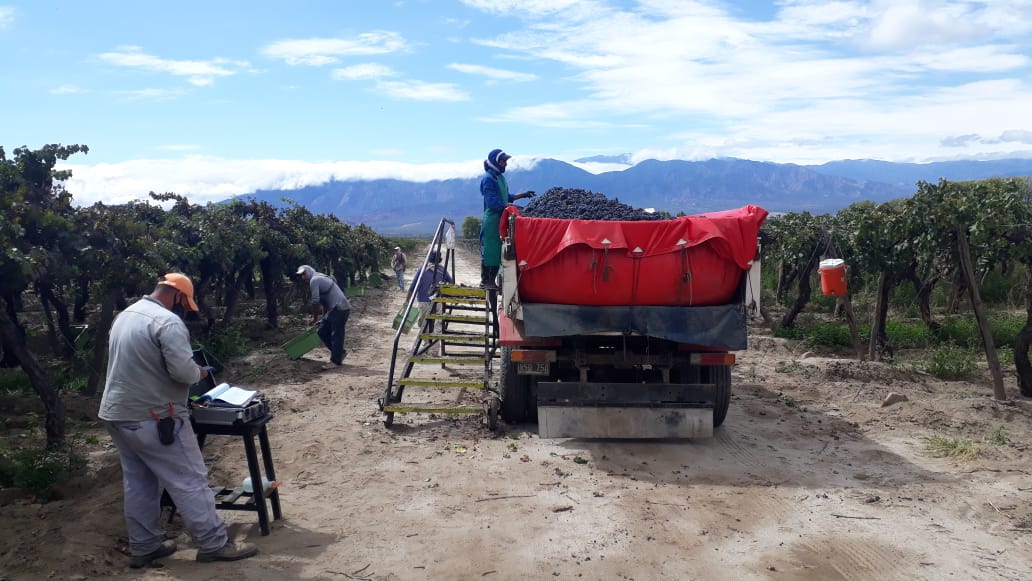
EXPECT: Fresher wines of lower concentration and lower alcohols
BEST FOR: Premium white wines; fragrant red wines
Cuyo & Mendoza
The season started with spring frosts which impacted some vineyards mainly in Eastern Mendoza and San Juan. Eastern Mendoza (which is mainly a source for bulk wine) was particularly affected, with reports of yield losses up to 25%.
A cooler, rainy summer (especially February) slowed down the harvest all over the Cuyo region, and cloud cover was far greater than usual in the land of sol y vino. The increased rainfall did have an impact on some white grape varieties, which were impacted by botrytis if not managed well. The red grapes, however, weren’t impacted by the summer rainfalls as a drier autumn set in and brought the harvest back up to speed.
During the maturation process we had quite low temperatures, and so we have much more fruit and acidity. I think it’s been an excellent year for white and sparkling wines which were slower to harvest, and the reds wines have actually been harvested at a normal time. The quality of the reds is fantastic, they have excellent phenolic maturation but with a lower alcohol — there’s a good balance with sugar and acidity.”
Silvio Alberto, winemaker of Bodegas Bianchi
In San Juan, the vintage in Pedernal seems to be particularly promising, with good concentration and lower potential alcohols.
Northern Argentina
In Northern Argentina, the wine regions didn’t experience the same wet and cool conditions are further south in Cuyo, and it was a more typical vintage for the Calchaquis Valleys.
Spring was quite normal with very little rainfall and we had a good budbreak. We had a dry December and January with lower rainfall than normal, but in February we had twice the normal rainfall but it was still on 80mm and so it wasn’t an issue. What it meant was that we had cloudier days which gave us a slightly slower maturation which gave us great concentration and colour.”
Francisco Tellechea, agronomist at El Esteco in Cafayate
Read the full 2021 Argentina vintage report
Southern Argentina
Patagonia’s Rio Negro and Neuquen regions report a relatively dry, windy summer with warm day time temperatures, and cooler nights. The combination has led to wines of good concentration but also fresh acidity and lower pHs.
Deeper south, in Chubut, there were no late frosts with a long growing season.
This year we had really nice maturity. The wines will be much more aromatic this year, although we might lose a bit of acidity. Compared to 2020 which was really cold, for example. But that’s what’s nice about Chubut is that each vintage is very different.”
Sofia Elena, winemaker at Contra Corriente
Argentina Vintage Guide 2020
Winemakers are tentatively celebrating what they consider one of Argentina’s top vintages this decade, albeit one of the smallest and a relatively hot one. 2020 was an exceptional harvest for many reasons and producers are pleased not only with the quality but also relieved about the timing of this record-breaking early vintage which saw most grapes harvested before the COVID-19 quarantine started in mid-March.
This year’s vintage was all about timing. “2020 will undoubtedly be remembered by the strict logistics to harvest the grapes in a very short period of time due to the explosive increases in sugar ripening,” says Juan Pablo Murgia, Chief Winemaker at Bodega Argento. “Although 2020 will also be remembered for making undoubtedly great and long-ageing wines.”
Although the heat spikes meant that water management was more key than ever, many winemakers are reporting it to be one of the best vintages yet — although extreme attention in the vineyard and winery were essential, suggesting it will be premium wines that come out on top while some of the bulk production will likely have suffered.
EXPECT: Concentrated and rich wines, but less production
BEST FOR: Premium wines and vineyards with good water access; heat-hardy varieties including Malbec
Cuyo & Mendoza
With a dry winter, heat spikes throughout the summer and the warmest March on record for the past two decades, many grape varieties matured at similar times and harvest came quickly and relatively condensed. Little did producers know at the time that this was a blessing in disguise, as strict movement restrictions for COVID-19 came into effect in mid-March (which would usually be mid-harvest!)
It was one of the earliest and most challenging vintages logistically that we’ve ever had at Viña Cobos. The combination of almost no winter snow and the hydric stress with a very warm and dry summer meant that the grape berries were very small and ripened very quickly. Some of our red varieties were 40 days ahead of normal! Which meant you had to pick at the right moment and condense harvest dates in order to avoid any overripe grapes. But in general, it was a really good quality harvest with excellent grape health.”
Head Winemaker at Viña Cobos, Andrés Vignoni
Although nationwide yields are estimated to be down by up to a third, by the time quarantine restrictions came into effect three quarters of the year’s fruit was already harvested — even in the south, where harvests are typically later.
Northern Argentina
In northern Argentina, cloudy and cool weather in the Calchaquí Valleys meant that the vintage was closer to their normal harvest dates (usually earlier than Cuyo) and producers are equally as optimistic about quality.
Grapes ripened a bit slower than usual, but the reds are very promising and our white wines will be fresher than other years.”
Thibaut Delmotte, winemaker at Colomé.
Read the full Argentina Harvest 2020 report online
Southern Argentina
“Our Malbec in Río Negro was harvested one month earlier than normal, similar to all the varieties this year,” says winemaker Marcelo Miras. “But we had excellent quality fruit this year — very healthy with good sugar maturation and a natural acidity.”
One of the greater issues in Río Negro and Neuquen was availability of vineyard workers, which was an even greater challenge in the pandemic.
Argentina Vintage Guide 2019
This year’s vintage in Argentina is marked by the challenging economic climate in the country, rather than any challenging climatic conditions. While winemakers are enthusiastic about the quality of the vintage, a wine surplus dampened spirits somewhat.
Out of the 1,208 wineries registered in Argentina, only 888 made wine this year (some 73%) and there was a slight drop in production with a production of 2.4 billion kilograms of grapes (compared to 2.5 billion in 2019).
However, across the major regions of Cuyo, the North and Patagonia, the vintage was typical of an excellent year in Argentina.
EXPECT: Good wines across the board and accessible price points.
BEST FOR: Premium wines and mid-range wines had a strong harvest and are buffered from the worst of the market impact.
Cuyo & Mendoza
A cold winter was followed by a cool spring. Heat spikes in January and February were concerning for quickly accelerating sugars, however, March cooled down significantly allowing for a slow down in ripening and producing balanced wines in the end.
Sparkling wine producers (who do harvest in February) did, however, have to acidify, although the dry and sunny climate allowed them to pick at whatever maturity they chose. “January and February were dry and sunny which allowed the sugar levels to increase quickly,” comments sparkling winemaker at Cruzat, Lorena Mulet. “The weather was in our favour during the harvest; allowing us to fully reach our weekly harvesting targets. This doesn’t happen that often. Some juices did, however, have a higher pH and below average levels of malic acid which meant that we had to intervene [with acidification].”
Uco Valley
Parts of the Uco Valley were affected by a spring frost with some producers losing a significant chunk of their yield. “Although the frost during the spring was not strong, it did affect our yield which is 25% lower than last year,” explains Juanfa Suarez, a grower and winemaker with 60 hectares in Altamira. “The harvest was a little bit later than usual but, in general, it was a fresh and dry year which is ideal for wines that are lower in alcohol with a good level of acidity. 2019 is a great year; the wines are showing a lot of character and freshness.”
Lujan de Cuyo
Despite the heat waves in January and February, a cooler March led to wines of good concentration with balanced acidity and sugar levels.
March was much cooler and the sugar accumulation slowed down and we were able to attain phenolic ripeness. We were able to wait and pick when we wanted to. The wines have lots of fruit, lots of colour and a medium structure. I think 2019 is the best harvest in the last 5 years.”
Valeria Antolin, winemaker at Piattelli in Lujan de Cuyo
San Rafael
A cold winter Lower average temperatures in the summer meant that San Rafael had a slower ripening process and a later harvest than usual.
For the red wines, the ripening process was generally quite slow. There were varying yields this year in red wines, but the Cabernet Sauvignon from San Rafael is particularly noteworthy this year, with an interesting characteristic which I have never seen before.”
“White wines this year are interesting being their have a much higher level of (malic) acidity and lower sugar content,” he added, commenting that they will have a greater potential for ageing. “In terms of quality, I personally think that it is a great year with wines with a lot of freshness and complexity.”
Leo Borsi winemaker across San Rafael
Patagonia
In Neuquen and Río Negro, there were peaks of summer temperatures (similarly to Mendoza) during January and February but otherwise the year was well-balanced, producing a good quality of wines. “The winter was very damp with a cold climate,” says Noemia winemaker Hans Vinding-Diers, who makes wines in Río Negro. “The first half of spring was damp and fresh and during the second half, there were dry and fresh winds. Overall, the summer was fresh with some brief peaks in temperature. Temperatures during the autumn were average. The conditions were good.”
“The only extreme climatic events which we experienced were some peaks in temperature which reached 45°C but they only lasted four or five days. It could have been dangerous but in the end, it improved the quality of the harvest. The reds have a great colour intensity and are fruity and fresh with very silky tannins and the wines are very well balanced. It has been an exceptional year.”
Much further south, in the emerging region of Chubut, the vintage got off to a slower start: “Due to the wet and cold spring, bud break was delayed,” explains Sofia Elena of Contra Corriente winery. “Plants grew steadily and healthily free from diseases throughout the summer, which was quite dry and very windy. Thermal amplitude reached 30ºC some days with temperatures dropping down to 3 to 5ºC. Early autumn luckily brought very few early frosts and mostly good weather so we were able to harvest healthy bunches with the right maturity of flavour and aroma by the end of April.”
Salta
In the northern wine regions of Argentina, 2019 was a dry and sunny harvest with less than 100mm of rainfall during the summer. ‘It was a really good year, and very dry as per normal in Cafayate,” explains Piattelli winemaker Valeria Antolin. “We were able to harvest when we wanted to, and the Torrontes from 2019 has much more floral and citrus notes this vintage.”
Argentina Vintage Guide 2018
This was a season free from rain in the summer with warm days and cool nights, all making for an excellent harvest. Nationwide production was up 35% with a total crush of 2.5 million tonnes compared to 1.9 million tonnes the previous year.
EXPECT: Great value wines with good quality across the board.
BEST FOR: Almost everyone! The only downside to 2018 was that it caused a surplus in 2019. It’s a buyers year – you’ll find great quality wines at affordable prices.
WORST FOR: There were a couple of isolated issues with frost (notably in the Uco Valley and Cafayate). Abundant grape supplies combined with a shaky economy has also left grape prices very low, which is very damaging for the growers.
Mendoza
Rainfall across Mendoza’s wine regions was normal (according to the historical average) and much lower than the previous years. There was a heavy hailstorm in the higher parts of the Uco Valley, which caused some loss of fruit, but yields were generally normal. The grapes were able to ripen fully and without disease pressure, making for intensely coloured wines with great expression and structure. The harvest was around two weeks earlier than usual.
The red wines this year are really balanced in terms of acidity, they have elevated malic acidity and a spectacular tartaric balance with respect to the alcohol. The white wines are fine and lean with medium concentration.”
Catena Zapata winemaker Alejandro Vigil
Salta & Northern Argentina
In the north, yields and conditions were consistent with the annual average, especially in Cafayate and Chilecito.
We can say it was a very normal year for Cafayate. During January 2018 the afternoons were cloudy which slowed down the accumulation of sugar and allowed us to have a very good maturation of the seeds and skins. We had a very good yield (despite losing 40% from one vineyard to frost), and the Autumn was very warm. We have red wines with great intensity of colour and aroma, with more volume in the mouth than the previous year.”
Winemaker Valeria Antolín from Piattelli
Neuquen & Rio Negro
In Patagonia, frost in spring and autumn affected yields but the quality was good.
The reds achieved excellent ripeness, offering fruity wines with intense colour and structure. The white grapes, picked at the right time, had great natural acidity for fresh, vibrant wines – typical of Patagonia.”
Winemaker Marcelo Miras
–
–
Argentina Vintage Guide 2017
Spring frost had a significant impact on yields this year, particularly causing poor fruit set for Malbec, with yields 40% to 60% lower than average at 1.9 million tonnes. Despite some adverse weather events, the climate during the growing season was relatively normal and wines are characteristic of a normal year with good quality.
EXPECT: Less wine on the market but good quality, concentration and colour.
BEST FOR: Premium wines.
WORST FOR: Bulk/cheap wines.
Salta & Northern Argentina
Yields were up from the previous year and harvest arrived early. “It was an early vintage, with our harvest dates almost a month earlier than normal,” said winemaker Valeria Antolín from Piattelli. “This is because January was very sunny and clear which increased the speed of maturation and the yield of the vines.”
Mendoza & San Juan
“The 2017 vintage had a very low yield because of frosts and zonda (foehn wind),” explained Matias Michelini, winemaker and owner of Passionate Wine. “Although yield was down, the quality was very good.”
The lower yield and warm, dry summer brought harvest earlier than usual. This was a blessing in disguise as April saw several hailstorms and major rainfalls.
“Low yields and excellent ripeness led to an impressive concentration of tannins and very intense colour,” said Doña Paula winemaker Marcos Fernández. “The tannic structure offers mouth-filling wines, and we can expect tremendous ageing ability.”
Patagonia
Further south in Río Negro and Neuquén, late spring frosts also reduced yields by up to 40%. A hot summer, flash floods and hail, also made this a very challenging year in terms of quantity.
Hans Vinding-Diers, winemaker at Bodega Noemía in Río Negro said that despite all these adverse events, “the quality of the grapes remained perfect: great acidity, fantastic fruit and, strangely enough, low alcohol. Veraison took at least a month and a half to complete and this could have put a brake on the sugars from rising too high.”
–
–
Argentina Vintage Guide 2016
It was a cool and late vintage, with a lower yield than usual. Mendoza and the Cuyo region was negatively impacted by El Niño whereas northern and southern regions escaped the brunt of it.
The El Niño weather cycle saw Argentina report its worst pre-harvest grape losses since 1957. There was a 27% drop in production nationwide compared to 2015 to 1.7 million tonnes. Some 400% more rain than usual fell during the early harvest period causing late concerns for rot.
EXPECT: Cooler climate wines and much less wine on the market than usual.
GOOD FOR: Premium wines, especially from the Uco Valley. Lovely cooler climate characteristics in the 2016 reds. Great quality from Patagonia and the North.
WORST FOR: Bulk and cheap wines. Costs of vineyard treatments bypassed the price of grapes, and many growers simply didn’t harvest. Eastern Mendoza (bulk-wine territory) reported losses of up to 50%.
–
Cafayate & Northern Argentina
In Salta, a spring frost reduced yields but the quality was good overall.
Mendoza
Yields in Mendoza were 39% down on those in 2015. The cool conditions meant lower alcohol levels (12% versus the usual 13-14%).
“It is a completely different year but the grapes are better than expected: sugar is low, pH is high and acidity is high,” explained winemaker Sebastian Zuccardi, of Zuccardi Wines.
The disease pressure meant more increased spraying to prevent botrytis and mildew, so lower quality and lower priced grapes were abandoned as costs overlapped the grape price. Premium vineyards were given vineyard treatments appropriately and provided good fruit. The free-draining and poorer soils in the Uco Valley meant that fruit in the region was far less affected by the rainfall.
San Juan
San Juan wasn’t as severely affected by the El Niño cycle and had a good yield. The vineyards of San Juan became a major resource for wine producers in Mendoza who were suffering a shortfall.
Patagonia
“We had a very good growing season: the winter started warm, but finished cold and spring was cool,” said Piero Incisa della Rocchetta from Bodega Chacra in Río Negro.
Neuquen and Rio Negro became major grape suppliers for Mendoza producers in 2016 (who were experiencing a shortfall).
–
Argentina Vintage Guide 2015
A warm winter, cool summer and higher-than-normal rainfall in the El Niño cycle meant that many areas failed to shine, meaning there was more work to be done in the vineyards. The total crush this year was 2.4 million tonnes of grapes.
Mendoza & San Juan
Warm temperatures in some areas with higher humidity than usual and some hailstorms made this a challenging year in Mendoza. Some areas had heavy rain during the summer and early autumn. Producers had to manage canopies and spend more time in the vineyards, in some cases picking earlier.
–
Argentina Vintage Guide 2014
Frost, cool weather during the ripening season, along with the rainfall at harvest time led to a small drop in yields to 2.6 million tonnes of grapes. Cool weather than usual led to fresher expressions of red wines with lower alcohol levels and higher acidity.
–
Argentina Vintage Guide 2013
Some regions experienced cooler days during the growing season compared with the previous year. This led to a delay in the ripening of some varieties and wines with lower alcohol levels, very good natural acidity and fresher aromatic profiles. Yields were good, with a total crush of 2.8 million tonnes of grapes.
–
Argentina Vintage Guide 2012
With a total of 2.2 million tonnes of grapes, the harvest this year was significantly lower than in 2011 and 2013. This was the result mainly of a strong zonda wind blowing into the Mendoza area around the time of flowering, followed by a cold front with rain. San Juan and Patagonia both had problems with hailstorms.
The red wines had notably intense aromas and colour, fresh fruit and floral notes, noticeable tannins, medium-to-full body and medium-to-high alcohol levels. Whites, in general, possessed medium aromatic intensity and slightly ripe fruitiness, with good acidity and alcohol.
–
Argentina Vintage Guide 2011
Spring frosts caused lower yields in some parts of Mendoza but these were offset by increased production in other areas and the total crush was some 2.8 million tonnes of grapes. Cool temperatures in the earlier part of the season resulted in fresh, aromatic white wines with lively natural acidity. Red wines were deep-coloured with great aromatic intensity and good balance between dryness and acidity, ripe, sweet and round tannins. Top wines are considered to have good ageing potential.
–
Argentina Vintage Guide 2010
Cool temperatures during the growing season in most areas meant slower ripening. This resulted in lower alcohol, higher acidity and a 10-15 day delay in harvest. There was a decrease in the production of some varieties but overall yields were good at 2.6 million tonnes of grapes.
–
Argentina Vintage Guide 2009
Frost in 2008 and severe hail in Mendoza and Cafayate all impacted on yields, which were down to 2.1 million tonnes of grapes. Despite this, the quality was good thanks to moderate summer temperatures and a good diurnal range. This led to wines with fresh fruit aromas and good length. Hailed by some as the best vintage of the decade.
–
Argentina Vintage Guide 2008
Yields remained fairly high at 2.7 million tonnes but the quality was mixed as unusual climatic conditions (cooler and rainier summer with some cases of hail). Reds were slower to mature and present more cooler climate characteristics than usual.
–
Argentina Vintage Guide 2007
This was a record-breaking year with a total crush of almost 3 million tonnes. Nonetheless, it was a varied year in terms of quality. Vineyards in northern Argentina and Patagonia produced excellent white and red wines. Some parts of Mendoza experienced excessive heat and/or rain so quality varied significantly depending on the site. Among the reds, it was the varieties that ripen first (eg Merlot) and last (Cabernet Sauvignon) that were those of the highest quality with good concentration and colour.
–
Argentina Vintage Guide 2006
Despite high yields of 2.8 million tonnes this year, the wines had good body, concentration and fruity intensity. Considered a very good vintage for most although a bit warmer than usual. The only major downside was a large hailstorm in Mendoza on 27th December, which was devastating for some vineyards.
–
Argentina Vintage Guide 2005
Parts of Mendoza experienced both severe spring frosts and hailstorms. Nonetheless, at 2.7 tonnes, the harvest was larger than that in previous years. 2005 was a slightly cooler year than normal and the vines benefited from a longer than usual ripening period, achieving phenolic ripeness without gaining excessive sugar levels. Considered an excellent vintage.
–
Argentina Vintage Guide 2004
Overall a good vintage in Mendoza and Argentina with a big harvest at 2.6 million tonnes. The late-ripeners, like Cabernet Sauvignon, were affected by late autumn rain, however.
–
Argentina Vintage Guide 2003
At 2.2 million tonnes, the yield this year matched that of 2002. It was another warm, dry year with fully ripe grapes making for nicely coloured, ripe and well-rounded wines. A normal year with good quality.
–
Argentina Vintage Guide 2002
This was a dry, warm year in which grapes were able to achieve full phenolic ripeness. Wines had ripe, well-rounded tannins and ripe, fruity aromas generous in body and alcohol. The total crush this year was 2.2 million tonnes.
–
Argentina Vintage Guide 2001
Yields remained high with a total crush of 2.4 million tonnes, however autumn rains meant the wines were less concentrated in general. The best wines from 2001 vintage in Mendoza come from well-draining soils.
–
Argentina Vintage Guide 2000
Summer had cooler temperatures than average and a balanced maturation process in the vineyards. This led to fresh, fruity wines with good acidity, moderate alcohol levels and good concentration.
–
Compiled and edited by Amanda Barnes and Helen J Conway.
Read our Chile vintage guide
Read our Uruguay vintage guide
